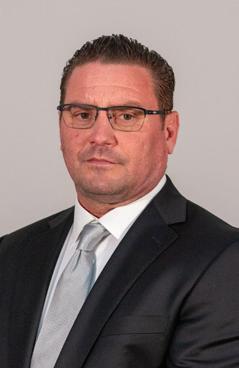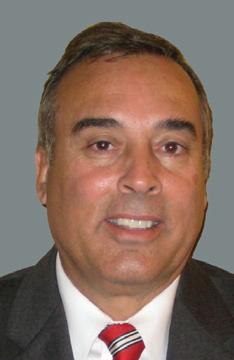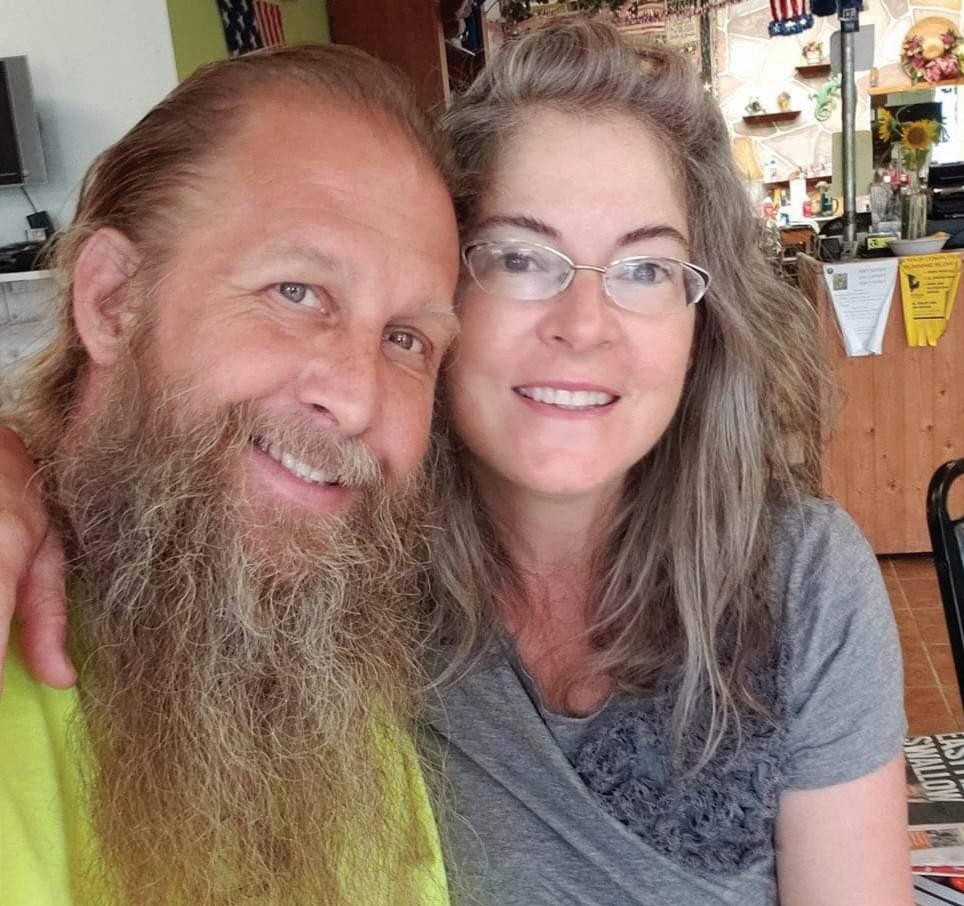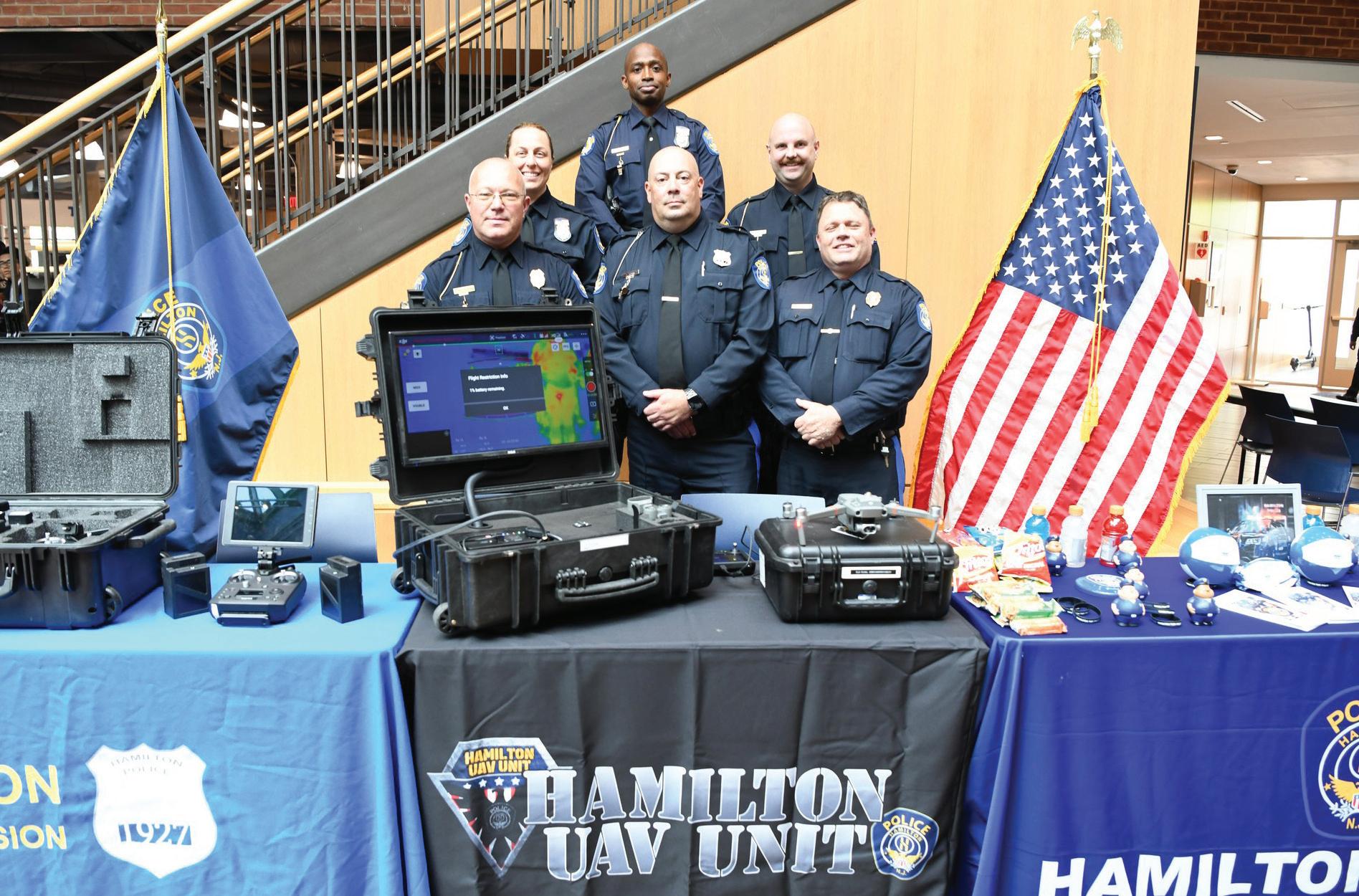
17 minute read
Better Health Programs/Complimentary Membership at 65+ Years Old
from 8-23 HP
LET’S TALK, A SENIOR SOCIAL GROUP
Wed., August 2, 9, 16, 23, & 30; 10 to 11 a.m.
Please join us for our ongoing program “Let’s Talk, a Senior Social Group,” gathering in a collaborative setting to exchange thoughts, feelings and experiences amongst peers. This is a safe-zone designed to be welcoming and understanding of all attendees while exploring this season of our lives – the ups and the challenges. This group is a partnership between RWJUH Hamilton and PyschHealth Associates here in Hamilton. This is a weekly program. Please feel free to attend one or all.
OVER THE COUNTER HEARING AIDSFAQ-WHAT YOU SHOULD KNOW
Scan the QR code to register and become a member or call 609-584-5900 or email bhprogram@rwjbh.org to learn more
Tues., August 8; 10-11 a.m.
Get the facts on the latest in over-the-counter hearing aids. Learn the facts and get your questions answered by Dr. Lorraine Sgarlato, Au.D. A.B.A. a clinical audiologist with over 40 years of experience in the field of hearing science.
SOCRATES CAFÉ,
Wed., August 9; 2 to 3 p.m.
“Socrates Café” is about discussing a topic, sharing our thoughts, our beliefs, our ideas, and experiences. An unofficial mantra describes that we (people) learn more when we question, and question with others. This is a “safe zone” to share where all views are accepted. Come with an open mind, respect for one another, and a willingness to see where it takes us.
Tai Chi Class
Thu., August 10 & 24; 1 to 2 p.m.
Tai Chi is recommended for seniors because it improves balance, strengthens muscles in the legs and increases flexibility and stability in the ankles. It can help reduce falls and back pain. Beginner’s welcome.
Game Time
Thurs., August 10; 2 to 3:30 p.m.
Join us for game time, snacks and some wholesome fun. A variety of board games will be available or you are welcome to bring your own
Yoga Classes
Tue., August 15 & 29; 10 to 11 a.m.
Krystal Loughlin, certified RYT, will be leading this gentle yoga class using traditional postures and breathing techniques offering modification of the poses for your body so that you can confidently participate. Beginner’s welcome.
MEDITATION CLASSES,
Tue., August 15 and 29; 11:15 to 11:45 a.m.
Krystal Loughlin will lead this meditation class focusing on reducing stress and bringing inner peace. See how you can easily learn to practice meditation whenever you need it most. Beginner’s welcome.
Technology Class
Wed., August 16; Noon to 1 p.m.
Frustrated navigating online registration for Better Health Programs? Can’t figure out how to text your grandkids. Back to help us with our technology challenges are our friends from “Camp Fire NJ, Teens on Fire.” Whether you have questions about your mobile device, a laptop, or iPad, bring your device and learn how to complete simple tasks.
Prediabetes 101
Tue. August 15; 11 to 12 p.m.
What you need to know and do if you have been diagnosed with prediabetes.
Antiques On The Road
Thu., August 17; 2 to 3:30 p.m
We ask all attendees to arrive promptly at 2 p.m. and be ready for a fun and informative program. Each attendee can bring only ONE item to have appraised. Together we will learn some history about our treasures and find out what’s hot and what’s not in the antique and collectables market. Thomas Petrino will lead this program. He has been a full-time Personal Property Appraiser and is Certified by the Appraisers Guild of America. He also serves as acting appraiser for the NJ Treasury, consults with banks, attorneys and insurance companies to authenticate and appraise estates.
That transformation began over 30 years ago, when a gardener on his Princeton letter carrier mail route gave him a clump of daffodils with the promise that once planted they would require no care other than cutting a bouquet or two for his wife, Anita. The daffodil bulbs performed as promised.


“They still flower every spring,” Sakowski says.

Soon, Sakowski was accepting donations from other gardeners on his mail route. It should be noted that such generosity masks a practical motive. When a gardener offers something to you, it means he or she will have more space for other plants. But gardeners do love to share and get other people excited about this activity. While the Princeton gardeners passed on growing advice with their plant gifts, Sakowski decided to get a more formal horticultural education, and enrolled as a Master Gardener. Today, with that background and decades of experience, he is always happy to pass on gardening wisdom to others. And, after viewing his front yard garden, it is obvious that he has a lot to report.
In 2016, a friend suggested he submit his backyard garden to the annual Gardening Contest held by the Pennsylvania Horticultural Society. This competition celebrates the greater Philadelphia area’s collective gardening effort and has been known to drawn close to 1,000 entries. Sakowski gave his backyard a try and he, or rather his garden, won a Blue Ribbon, the highest prize.
Two things then happened to spur Sakowski on to display greater, public creativity.


First he was featured in the national Country Gardens magazine (now defunct as a result of circulation drop during the COVID-19 pandemic). That 2018 article reached almost 1 million readers. Many of these were located along Sakowski’s mail route as he made sure everyone knew about it.
Others were fellow members of St. Raphael-Holy Angels Parish in Hamilton. There, Father Gene announced one Sunday that Sakowski’s garden was featured in a national magazine, an honor that not many can claim.

By that time, Sakowski had pretty much run out of space in his backyard. There were still lots more bulbs, perennials, and shrubs he wanted to grow. And since most people could not see his back garden, he felt it time to show everyone what he could create in a more public space.
As one gets into gardening, which can be viewed as a living art form, design is crucial to a successful garden’s appearance. Through visits to other gardens throughout New England and the mid-Atlantic area and annual visits to the Pennyslvania Horticultural Society’s flower show, Sakowski had learned to appreciate and to harmonize plant texture, color, and height. Over the years, he has acquired some favorites. “Perennial geraniums are my old time favorite,” he says.
Of these, Biokovo stands out. This exceptionally easy care ground cover is evergreen, covered in white flowers for weeks in late spring, and boasts red and orange tinged foliage in fall and even into winter.
“Deer and rabbits leave it alone,” Sakowski notes, “and it thrives in shade to part sun. Native coneflowers are a close second. These perennial sun lovers have been bred to produce flowers in purple, orange, white, yellow, and red and they create an extravant display throughout summer. “They are super in cut flower arrangements too,” he adds.
All that history went into the creation of his front yard display. That plus a greater appreciation for the environment. He chooses plants that do not need excessive chemicals to survive and creates his own fertilizer that also works as a mulch to smother weeds.
This is a mixture of licorice root, compost from his vegetable garden, and leaves that he gathers and shreds. Second, he retired as a letter carrier last year.
Now with national coverage behind him and additional free time in front of him, Sakowski could not only fine tune his front garden but also more fully appreciate it. He calls it “a pollinator’s
Disney World” as various bees busily hum about.
On an individual level he is combating the dramatic bee population decline that Rutgers scientists have documented this year.
It has also meant that he could almost get rid of the last remaining bit of lawn that needed to be cut. Sakowski is not a devotee of lawn cutting and even less of the loud, annoying noise of gas lawn cutters. Where the strip between the street and sidewalk was formerly all grass, it now features pockets of colorful bulbs in spring and perennials in summer.
So as the American slang expression introduced a century or more ago, states, “Come on by.” This public garden is easy to spot when you are on Arena Drive, and Sakowski encourages all to walk along the pathways and appreciate the rolling artistic display.

There is even a bench for those who would like to sit a minute or two. He urges visitors to return throughout the growing season, since the display is forever changing as flowers and their colors emerge and then fade only to be replaced by others.
“It’s never static,” he says, “and it’s wonderful to see how it develops week by week, month by month.” was, and if I were in the job market now, without that degree, it would still be a huge strike against me,” he says. “It’s that big question that other people don’t have to answer because they did it the ‘right way’” — i.e., they have a degree.

But Zara, who grew up in Hamilton, makes it clear that his goal with Uneducated is not to suggest that there is no value in going to college. As he writes in his prologue:
“Education is a net good for society. It lifts people out of poverty and provides opportunity. It’s valued because it’s necessary. I realize that, and it is probably the thing I find most painful about not having a degree.”
He often regrets the fact that he did not have the college experience.
“There are things that you miss out on: the bonding experience of college, the basic experience of being on the campus and absorbing information from your fellow students and teachers. Not having had that experience, I assume that I missed out on something great,” he says. He also rues missing out on the networking opportunities that colleges and universities can offer. “We get a lot of interns here from working with colleges directly,” he says. “Those experiences are so crucial when you’re starting out. They set you on a path, and I missed out on that as well. I feel a lot of regret about that. Maybe I shouldn’t feel regret, but I do.”
Zara was born at St. Francis Hospital in Trenton in 1970. His family lived in Trenton, where he attended Holy Family Grammar School and St. Anthony’s. When he was 7 or 8, the family moved to Hamilton, and in fifth grade, he started attending Lalor Elementary School.
It was while he was a student at Hamilton High School West that things started to go south for him academically. “What I remember was it was it felt like a place without a lot of hope. There were a lot of people who didn’t seem like they thought they had options,” he says.
He wonders how things might be different today if he had gotten more support from the school system in his youth. As a freshman, he was a straight D student, and he wonders why no one seemed to notice.
But his parents, he writes, had stopped speaking to each other, their marriage on the rocks. By 11th grade, he was regularly getting called to the vice principals’ offices for acts of rebellion. One too many of those led to his expulsion.
A self-harming incident followed that, and he spent four days in a behavioral health center. He was classified as “emotionally disturbed” and sent to a “special school.” One day, instead of boarding the bus for that school, he just kept on walking.
“Would it have killed me to suck it up on that chilly fall morning in 1987 and ride the stupid short bus?” he writes now.
Zara went on to pass the General Educational Development test, or GED, roughly around the time he would have graduated from high school. But he knew it would never be the same as having a diploma. In his 20s, he spent a number of years working menial jobs and struggling with drug use and addiction.
He moved to Orlando to get clean, then on to Seattle. “I was on a track to being a retail worker for the rest of my life — scooping ice cream, working in picture frame shops,” he says. “I was in my 30s, thinking, this is what my life is going to be. I think I started at that point trying to figure out what I was going to do with my life.”

He had been told by a number of people over the years that he was a good writer. He decided to find out if he could make a living at it. He pitched a story idea to MovieMaker magazine, which was accepted. That led to other freelance writing assignments, including some for Seattle Magazine.

He set his sights then on the center of the publishing world. New York.
“I decided, sort of naively, after I had a handful of clips that I would just come to New York and see what I could get into, see if I could find a job here. People come here after going through masters programs and working internships and whatever, and I came here with none of that,” he says.
He nevertheless scored an internship with a struggling trade publication, Show Business Weekly, that unexpectedly turned into a full-time editor’s job. After the magazine folded, he was able to get another job, this time with the International Business Times. And that, eventually, led him to Fast Company.
Zara says that writing the book gave him a new perspective on some of the turning points in his life, like the four days he spent in the mental hospital.
“I had always thought of that experience as somewhat inconsequential and amusing,” he says. “It had never struck me as being a central part of my life, but it ended up being that for a few reasons. The patients that were there that I bonded with, I don’t know their names, but I still remember them fondly. It was somewhat similar to a dorm experience, I suppose. I didn’t realize that was so profound until I started writing about it.”
He also learned in the course of writing the book that he had been given a diagnosis during that time that he was never told about: schizotypal personality disorder.
“I don’t know if I have it, but when I looked it up, some of the things I learned about it made it sound like it would have been helpful to me to learn about that 35 years ago,” he says.
Today, Zara lives on the Upper West side with his wife, Christina D’Angelo, a graphic designer. The seed to write a memoir was planted sometime after the 2012 election, when he noticed lot of media coverage of the white working class and broad presumptions being made about people who didn’t have college degrees.
“I don’t even really have a high school diploma, and that conversation is still uncomfortable to have,” he says. “And I thought I had to talk about it at some point, and I thought, if I’m going to talk about it, I might as well write about it.”
He pitched the story to a number of book publishers, eventually getting a deal with Little, Brown. “There are lots of books about the value of college education, but a lot of them are written by college graduates,” Zara says.
He wanted to write a book from the perspective of a person who has navigated the waters of professional life without a degree. He hopes he can help people see that there is a power of education that society values, and those who have that power must use it wisely. “The big issue is that we’ve created a system where there’s only this one way to succeed,” he says.
Uneducated by Christopher Zara. Published by Little, Brown and Co. Available online at Amazon.com. Christopher Zara’s website is christopherzara.com.
RISTORANTE & PIZZA
DINE & DONATE DAY
1973
Years
In honor of our 50th Anniversary, Brother's Pizza on Rt. 33 will host a "Dine and Donate Day" for a local charity. We have chosen one Sunday per month to donate 50% of our sales to a featured 501c organization. Please support our cause to give back to our community!
RISTORANTE & PIZZA
UPCOMING CHARITABLE EVENTS:
2023
SEPTEMBER 10: Ryans Quest
OCTOBER 8: I Believe in Pink
NOVEMBER 12: Shine & Inspire
DECEMBER 10: OneProjectNJ & Mobile Meals of Hamilton
1973
DOUGH RAISED:
197 3
JAN. 15: Sea Girt Polar Plunge $4,733.56
FEB.19: Deborah Heart & Lung $3,680.33
MAR.12: The Hamilton YMCA $4,398.07

Apr.16: Police Unity Tour 2023 $3,596.30
Years
May 21: The Miracle League $4,860.53
June 11: Autism New Jersey $3,871.84
JULY 9: Joeys Little Angels $4503.94
2023
Please consider visiting the websites of these organizations for additional donation opportunities!
on foot with the use of the drone,” the chief said, “and the bear eventually made its way south. The drone allowed the responding officers to keep their distance.”
DeBoskey, who stepped into the role of chief on June 1 of this year, credited his predecessor, former Chief James Stevens, with the idea of bringing drones to the force in 2019.
“Chief Stevens did his homework,” DeBoskey said. “And he convinced the administration that drones would be a positive asset for the police department.”
The department’s UAV Unit (UAV stands for Unmanned Aerial Vehicle) has three drones, and six officers licensed to use those drones. But it’s not just the police department that has the potential to put eyes in the sky. The Hamilton Township Fire Department has two drones and two licensed pilots — Hamilton Fire Chief Chris Tozzi being one of those pilots.
Drones have been available for hobbyists since 2010, according to a report from The Brookings Institution in Washington, DC, in 2016, when the Federal Aviation Administration established a drone licensing system, called Part 107, that change allowed people to secure drone pilot licenses in order to use the technology for commercial endeavors.
It was then drones became viable tools to assist police officers and firefighters in their jobs.
By May 31, 2022, the Federal Aviation Administration, the U.S. department which controls the nation’s airspace, issued a report noting that 865,505 drones had been registered in the U.S. Most of those drones, approximately seventy percent, are run and operated by law enforcement departments.
CJ Smith, a category marketing manager for drones with NYC-based Adorama Business Solutions, told a reporter for “Police Chief” magazine: “Drones are revolutionizing search and rescue, disaster response, crime scene mapping and modeling, [and] tactical overwatch.” Smith added, “in many cases, drone operators have found useful ways to increase public safety.”
And increased safety resulting from drone use has also been evident here in Hamilton.
Strict rules apply to the commercial flying of drones. There are altitude limits, usually 400 feet; but those limits can vary depending on location. There are restricted flying areas—for example, air space constraints exist for drone pilots around the Trenton-Robbinsville Airport on Sharon Road.
For safety reasons, the drone operator must always keep the drone within a line of sight. Drone pilots are assisted by apps; which, like flight instruments in a plane or helicopter, provide information about the location of the drone vis-a-vis the flight activity in an area.
Hamilton Police Sgt. Ed Lugo, the Supervisor of the police department’s Tech Services Unit, said the department’s drones played important roles at the scene of the May 18 warehouse fire on Whitehead Road. That fire, as described in a Hamilton Township Fire Department press release, was, “at its peak . . . operating at four alarms with 26 fire fighting units from 14 municipalities on scene.”
Lugo said the warehouse fire was the first time the township police drone unit had worked alongside the township fire department. ”We were out there together,” Lugo said. And his team launched drones to assist firefighters battling the blaze on rooftops.
Fire Chief Tozzi said having drone eyes in the sky was an amazing asset for all the units. One of Tozzi’s major concerns, he said, became the steel water tower on top of the former factory. His colleagues were battling flames under that tower, and Tozzi knew the intense heat from the flames could potentially bring the water tower crashing down. The cameras in the drones–one regular camera, and one which could monitor the heat intensity–were hovering over the roof.
Tozzi said, “once you put the drone up and see the video, it’s a different visual advantage.” And with that advantage, Tozzi said his crews could be directed where they were needed at any given moment. He could also continue to monitor the temperature of the water tower, and thus, keep tabs on its integrity. The drones, he said, enhanced the ability to fight that fire more carefully.
DeBoskey, Tozzi and Lugo agreed that using drones in many situations only enhances timely responses and increases safety measures for personnel.
For example, while drone officers watch unfolding incidents from the ground, the video can be live-streamed back to police department headquarters. According to Lugo, sending pictures back to shift commanders “allows them to make decisions on resource management.” Are there enough people on the scene? Does someone at headquarters see something on a larger monitor, in a well-lit room, that drone operators and colleagues might not see on smaller mon- itors in the dark?
Using drones, the three leaders indicated, requires good team work.
Sgt. Lugo talked about using drones to locate missing people, including children. He said in those cases, a drone saves valuable time. “If you get the drone operator there first,” Lugo said, “we can lock the [lost person] into a grid.” The drone pilot can then fly the drone back and forth to scan the gridded area where the missing person was last seen. The drone gives a big picture view from above. Putting the drone up instantly also allows other responding officers time to drive safely to a location.
Chief DeBoskey noted: “the drone gives us the same capability as calling in the State Police helicopter. Except, the drones are readily available and can be put up quickly.” He added that flying drones is economical compared to a helicopter; the drones run on rechargeable batteries.

See STORY, Page 12
DRONES continued from Page 11

The Hamilton UAV unit has also received mutual aid calls. Recently, Hamilton drone officers were called to assist in finding a missing kayaker. Drones have been used to monitor traffic flow on streets or highways while accidents are being cleared away.
But there are plenty of other uses for drones beyond emergencies. Tozzi said, the fire department, for example, as part of the township’s Emergency Management Team, will use drones to take photos of all the government buildings. This will allow the township to get a look at the condition of roofs, water towers, and other structures; but, the photos will also become a digital archive. Should these structures be damaged during a hurricane, for example, the township would have before photos to compare with after photos. Having that kind of photo evidence could speed up insurance or FEMA reimbursements.
Prior to drone technology, the township would have had to rent planes, or helicopters to accomplish that kind of documentation. Checking roofs has usually been done by people climbing ladders and walking around. Drones have changed that dynamic.
Mayor Jeff Martin fully supports this new technology and the opportunities it offers the township government, while providing increased security for township residents. “I think residents can see the investment the township has made to keep our community safe, thanks to former and current chiefs thinking outside of the box.”
DeBoskey, Tozzi and Lugo seem to know they probably haven’t yet figured out all the possible uses for drones. An online article in the eMagazine “SlateTech” noted: “Increasingly, drones will be able to operate autonomously, executing preplanned flight patterns without the control of operators.” Tozzi thinks it would be amazing to send a drone to the scene of an incident using geographic coordinates, allowing his emergency personnel to monitor and assess a potential fire, or other incident, while driving to get there.
“Drones,” Tozzi mused, “can cover so much area.”







If you want to get in on the drone buzz–and they do buzz–you can see them in action during Hamilton’s National Night Out, scheduled for Tuesday, August 1, 2023 from 5-8PM at Hamilton Township Veterans Park, South Side (2206 Kuser Rd, Hamilton NJ 08690). This event is Rain or Shine.
No bears allowed (Teddies are okay); but if the real ones show up, the drones will be ready.










